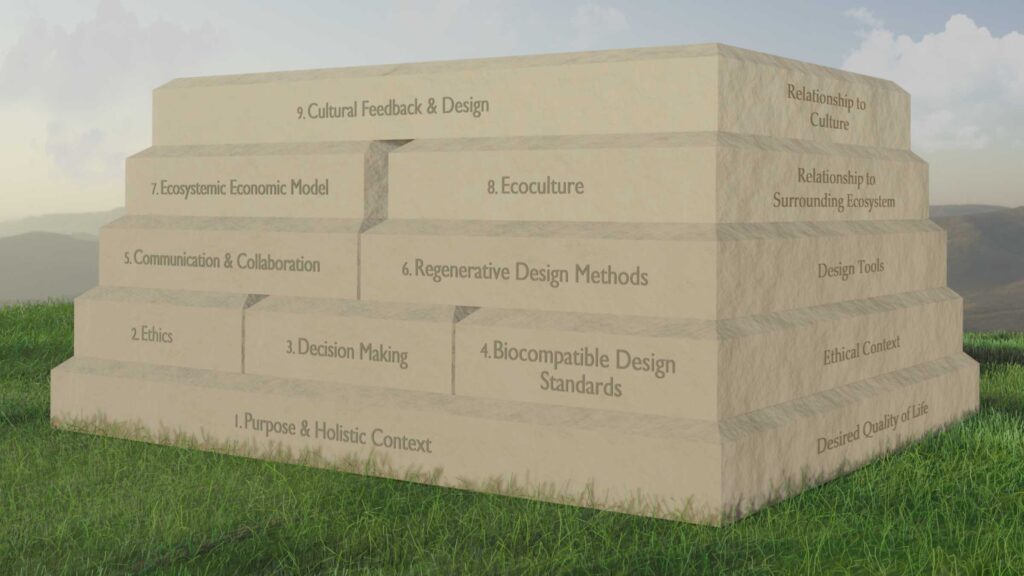IRD Framework
Integrated Regenerative Design is a system that allows transdisciplinary teams to collaborate on large-scale projects, creating sustainable and regenerative solutions to complex problems. The IRD system is structured as a flexible framework that can be easily scaled up or down, allowing it to be adapted to almost any design challenge.
The IRD framework contains nine major elements that all work together to enable teams to create designs that are ecosystemic, biocompatible, regenerative, and profitable, ultimately helping to create the desired quality of life for everyone involved.
- Purpose & Holistic Context – every projects starts with a clear statement of purpose, a definition of the boundaries of the system under design, the internal and external stakeholders, the project’s metrics of success, and the quality of life desired by everyone involved.
- Ethics – a clearly defined set of ethics that will be used in the design, development, operation, and decommissioning of the system.
- Decision Making – an approach to distributed decision making that keeps all perspectives involved in strategic decisions while enabling teams to make tactical decisions quickly and effectively.
- Biocompatible Design Standards – a set of 21 design principles that help create systems requirements that are deeply compatible with the Earth’s biosphere.
- Communication & Collaboration – a set of organizational practices that allow large teams to effectively work together, even when they involve multiple organizations.
- Regenerative Design Methods – a whole-systems approach that supports the creation of designs that are ecosystemic, biocompatible, and regenerative.
- Ecosystemic Economic Model – an economic model that recognizes the value of functioning ecosystems.
- Ecoculture – the active participation in the restoration and regeneration of the wild places adjacent to or affected by the design.
- Cultural Feedback & Design – the establishment of an ongoing dialog with the communities and cultures affected by design, ensuring that technologies create a surface area that supports healthy culture.
The arrows at the bottom of the page will take you through a more detailed exploration of each of these nine elements.

